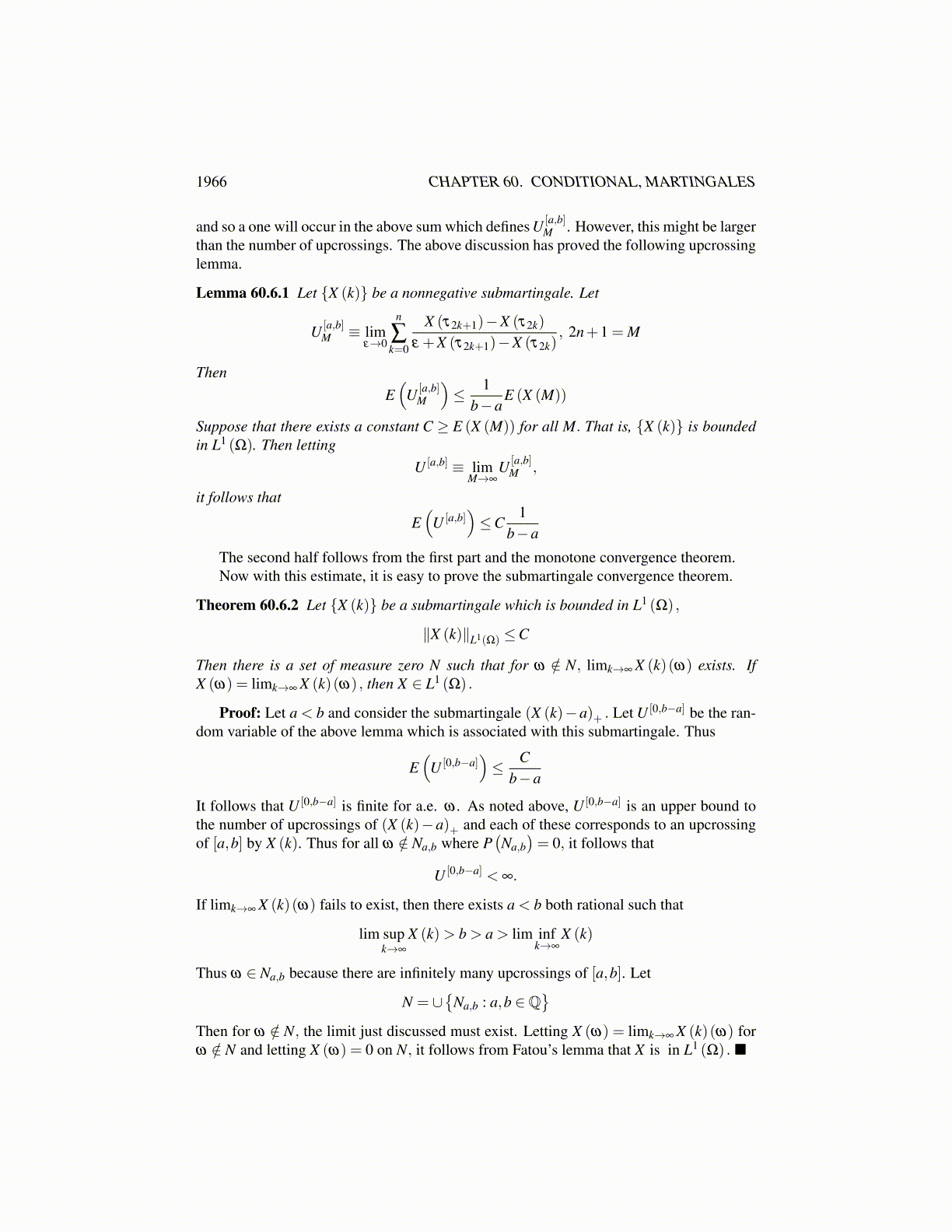
1966 CHAPTER 60. CONDITIONAL, MARTINGALES
Let M (k)≡ X (k)−A(k). A(τ) is Fτ measurable by Proposition 62.6.3.Note the nonnegative integers could be replaced with any finite set or ordered countable
set of numbers with no change in the conclusions of this lemma or the above optionalsampling theorem.
Next consider the case of a submartingale.
Theorem 60.5.6 Let {X (k)} be a submartingale with respect to the increasing sequenceof σ algebras, {Fk} and let σ ,τ be two stopping times such that τ is bounded. Then X (τ)defined as
ω → X (τ (ω))
is integrable andX (σ ∧ τ)≤ E (X (τ) |Fσ ) .
Proof: The claim about X (τ) being integrable is the same as in Theorem 62.6.5. Ifτ ≤ l,
E (|X (τ (ω))|) =l
∑i=1
∫[τ=i]|X (i)|dP < ∞
By Lemma 60.5.5 there is a martingale, {M (k)} and an increasing process {A(k)} suchthat A(k+1) is Fk measurable such that
X (k) = M (k)+A(k) .
Then using Theorem 62.6.5 on the martingale and the fact A is increasing
E (X (τ) |Fσ ) = E (M (τ)+A(τ) |Fσ ) = M (τ ∧σ)+E (A(τ) |Fσ )
≥ M (τ ∧σ)+E (A(τ ∧σ) |Fσ )
= M (τ ∧σ)+A(τ ∧σ) = X (τ ∧σ) .
because in the above, it follows from Lemma 60.5.5, A(τ ∧σ) is Fτ∧σ measurable andfrom Lemma 62.6.4,
Fτ∧σ = Fτ ∩Fσ ⊆Fσ
and soE (A(τ ∧σ) |Fσ ) = A(τ ∧σ) .
60.6 Submartingale Convergence Theorem60.6.1 Upcrossings
Let {X (k)} be an adapted stochastic process, k = 0,1,2, · · · ,M adapted to the increasingσ algebras Fk. Also let [a,b] be an interval. An upcrossing occurs when X (k) < a andyou have X (k+ l) > b while X (r) < b for all r ∈ [k,k+ l−1]. In order to understand